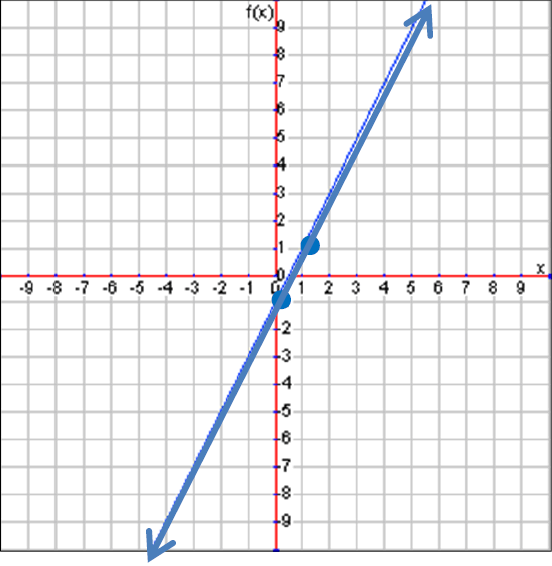GRAPHING WITH SLOPE INTERCEPT FORM
Before we begin looking at systems of equations, let’s take a moment to review how to graph linear equations using slope-intercept form. This will help us because one way we can solve systems of equations is to graph the equations and see where the lines cross.
Slope-Intercept Form
Any linear equation can be written in the form y = mx + b where m is the slope and b is the y-intercept. Sometimes the equation we need to graph will already be in slope-intercept form, but if it’s not, we’ll need to rearrange the equation to get it into slope-intercept form. Take a look at the following equations :
Example 1 :
y = 2x - 1
This equation is already in slope-intercept form. Nothing needs to be done.
Example 2 :
2x + y = 7
This equation is not in slope-intercept form. We’ll need to rearrange the equation to get it into slope-intercept form.
2x + y = 7
Subtract 2x from both sides.
y = -2x + 7
Example 3 :
3x - 2y = 4
This equation is not in slope-intercept form. We’ll need to rearrange the equation to get it into slope-intercept form.
3x - 2y = 4
Subtract 3x from both sides.
-2y = -3x + 4
Divide both sides by -2.
y = (-3x + 4)/(-2)
y = -3x/(-2) + 4/(-2)
y = (3/2)x - 2
Example 4 :
-4x + 2y = 8
This equation is not in slope-intercept form. We’ll need to rearrange the equation to get it into slope-intercept form.
-4x + 2y = 8
Add 4x to both sides.
2y = 4x + 8
Divide both sides by 2.
y = (4x + 8)/2
y = 4x/2 + 8/2
y = 2x + 4
So, step one in graphing is to get the equation in slope-intercept form.
The y-Intercept and the Slope
Once you have an equation in slope-intercept form, start by graphing the 1-intercept on the coordinate plane. From the 1-intercept, move the rise and run of the slope to plot another point. Finally, draw the line that connects the two points. Let’s use our previous equations to graph step-by-step.
Example 1 :
Graph : y = 2x - 1.
Solution :
Step 1 :
The y-intercept is -1, so we plot a point at -1 on the y-axis to begin.

Step 2 :
Next, the slope is 2 which means a rise of 2 and a run of 1. So we’ll move up two and right one to plot the next point.

Step 3 :
Finally, connect the dots with a line. This completes the graph of our linear function.

Example 2 :
Graph : y = -2x + 7.
Solution :
Step 1 :
The y-intercept is 7, so we plot a point at 7 on the y-axis to begin.
Step 2 :
Next, the slope is -2 which means a rise of 2 and a run of 1. Since the slope is negative, we’ll move down two and right one to plot the next point.
Step 3 :
Finally, connect the dots with a line. This completes the graph of our linear function.

Example 3 :
Graph : y = (3/2)x - 2.
Solution :
Step 1 :
The y-intercept is -2, so we plot a point at -2 on the y-axis to begin.
Step 2 :
Next, the slope is 3/2 which means a rise of 3 and a run of 2. So we’ll move up three and right two to plot the next point.
Step 3 :
Finally, connect the dots with a line. This completes the graph of our linear function.

Example 4 :
Graph : y = 2x + 2.
Solution :
Step 1 :
The y-intercept is 2, so we plot a point at 2 on the y-axis to begin.
Step 2 :
Next, the slope is 2 which means a rise of 2 and a run of 1. So we’ll move up two and right one to plot the next point.
Step 3 :
Finally, connect the dots with a line. This completes the graph of our linear function.

Kindly mail your feedback to v4formath@gmail.com
We always appreciate your feedback.
©All rights reserved. onlinemath4all.com
Recent Articles
-
Digital SAT Math Problems and Solutions (Part - 144)
Apr 14, 25 07:27 PM
Digital SAT Math Problems and Solutions (Part - 144) -
Quadratic Equation Problems with Solutions (Part - 1)
Apr 14, 25 11:33 AM
Quadratic Equation Problems with Solutions (Part - 1) -
Quadratic Equation Problems with Solutions (Part - 2)
Apr 14, 25 11:22 AM
Quadratic Equation Problems with Solutions (Part - 2)
